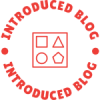In the vast landscape of printing technologies, two methods stand out for their unique capabilities and applications: screen printing and laser printing. While both serve the purpose of transferring ink onto various surfaces, their methodologies, outcomes, and ideal use cases differ significantly. This blog delves into the nuances of these printing processes, offering a comprehensive understanding that goes beyond basic introductions. By exploring the intricacies of each technique, we aim to illuminate the distinct paths they carve in the world of print media.
The Foundation: Understanding the Basics
Screen Printing:
Rooted in ancient techniques, modern screen printing (also known as silkscreen printing) employs a mesh screen with a stencil that blocks parts of the image, allowing ink to pass through the open areas onto the substrate. This method is highly versatile, capable of printing on fabrics, paper, plastics, metals, and even glass. It excels in producing vibrant, thick layers of ink that are durable and resistant to fading.
Laser Printing:
Laser printing, a digital process, involves using a laser beam to create an electrostatic image on a charged drum, which attracts toner particles. The toner is then fused onto the paper via heat, resulting in crisp, high-resolution prints. This technology is ubiquitous in offices and home setups due to its speed, efficiency, and ability to produce high-quality text and images.
A Deeper Dive: Technical Differences
- Process Complexity:
- Screen Printing: Requires setup including stretching the mesh screen, designing and applying the stencil, and mixing inks. Each color typically needs a separate screen, making it labor-intensive for multi-color designs. However, once set up, it allows for bulk printing at relatively low cost per unit.
- Laser Printing: Utilizes digital files directly, simplifying the setup process. The laser and toner system handle color separation and application automatically, facilitating quick turnarounds and ease of use, especially for small to medium print runs.
- Material Compatibility:
- Screen Printing: Offers unparalleled adhesion to textured and uneven surfaces, making it ideal for fabrics and promotional materials like t-shirts, banners, and signage.
- Laser Printing: Best suited for smooth, flat surfaces like paper, cardboard, and some plastics. While advancements have expanded its range, laser printers still struggle with certain materials and thicknesses.
- Cost and Scalability:
- Screen Printing: Initial setup costs can be high due to screen preparation and ink mixing, but unit costs decrease significantly with larger print runs. It's economically viable for bulk orders and custom jobs requiring unique inks or effects.
- Laser Printing: Generally lower upfront costs with higher running costs per page, especially for color prints. Its strength lies in small to medium-sized batches and on-demand printing, thanks to its speed and flexibility.
- Quality and Detail:
- Screen Printing: Known for its ability to produce rich, opaque colors and thick ink deposits. However, it may not achieve the fine detail resolution possible with digital methods.
- Laser Printing: Offers exceptional clarity and precision, capable of rendering intricate designs and tiny fonts with minimal distortion. Color accuracy is also superior, thanks to advanced calibration systems.
Applications and Use Cases
Screen Printing:
- Ideal for apparel, including custom t-shirts, athletic wear, and fashion designs.
- Popular in the signage industry for creating durable, weather-resistant outdoor signs.
- Perfect for artistic projects that benefit from thick, textured ink layers, such as posters, murals, and fine art prints.
Laser Printing:
- Essential in offices for document printing, including reports, presentations, and brochures.
- Ideal for direct mail campaigns, business cards, and other marketing materials requiring high-quality images and text.
- Useful in educational settings for printing textbooks, worksheets, and educational resources.
Conclusion: Choosing the Right Tool for Your Needs
The choice between screen printing and laser printing hinges on your project's specific requirements. If you're seeking durability, vibrant colors, and a tactile quality on diverse materials, screen printing is your go-to. Conversely, for speed, precision, and cost-effectiveness in smaller quantities, laser printing reigns supreme. Understanding these differences allows for making informed decisions that optimize both quality and efficiency, ensuring your print projects meet their full potential.
